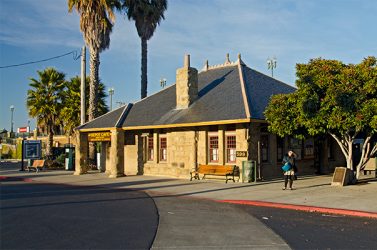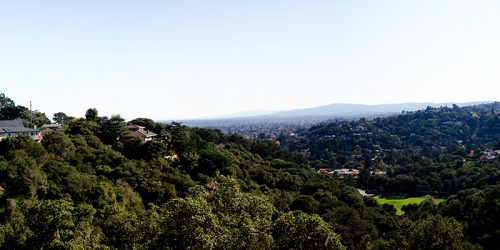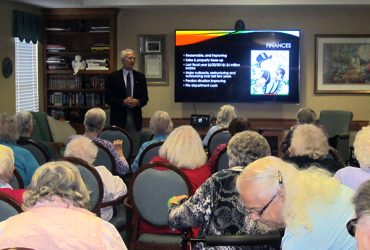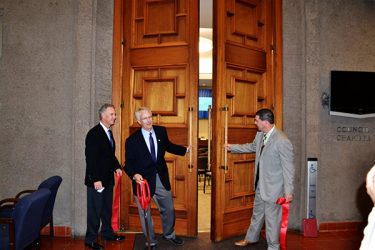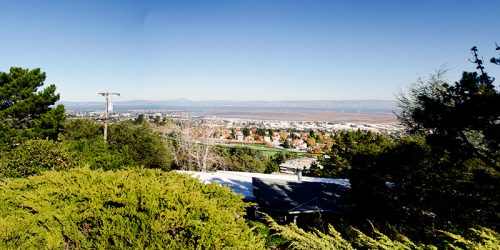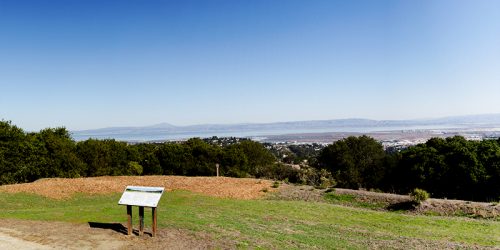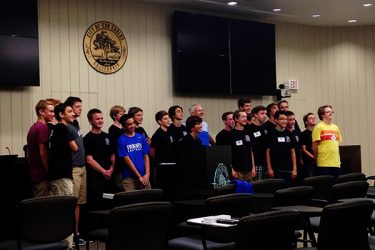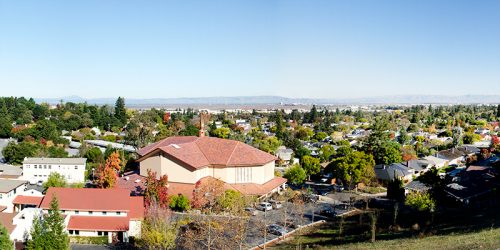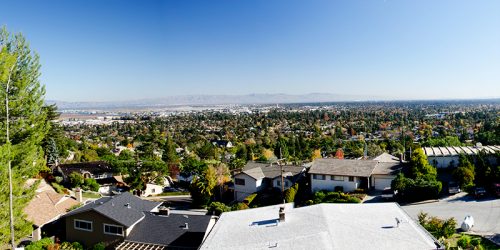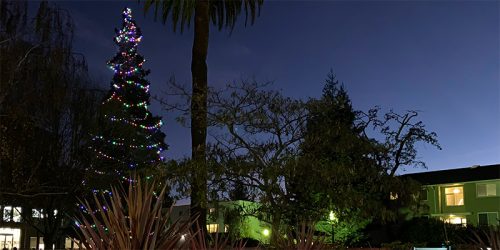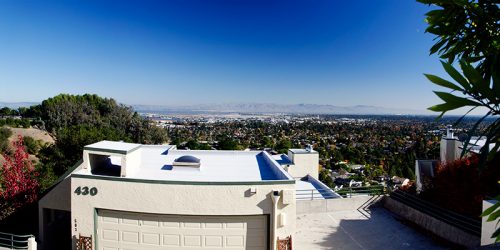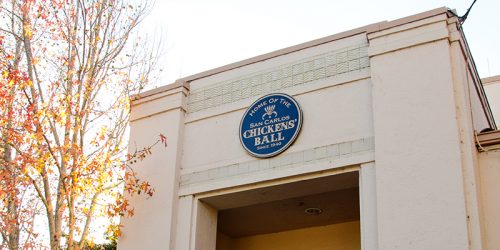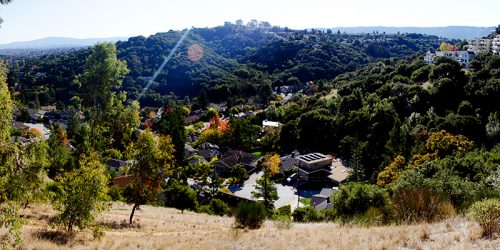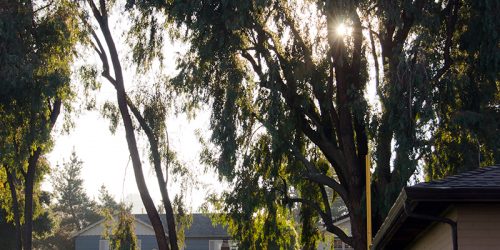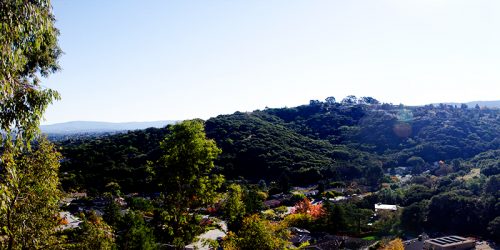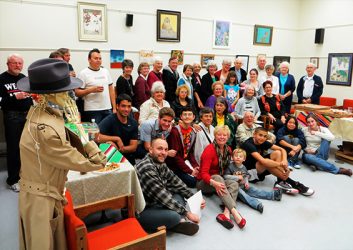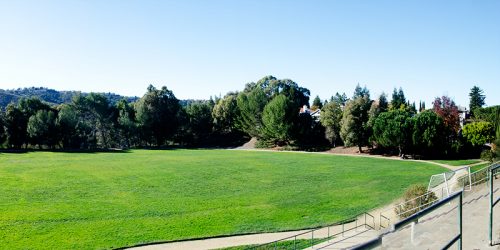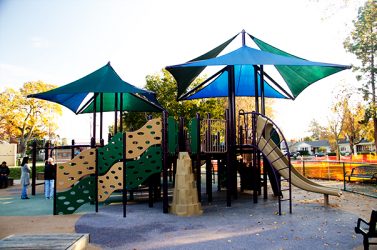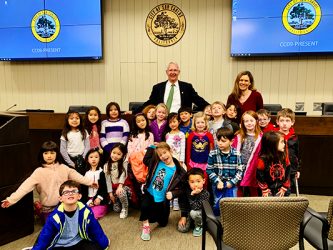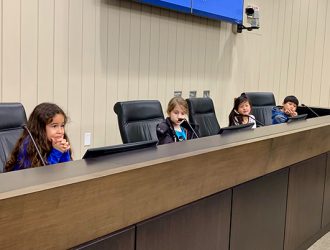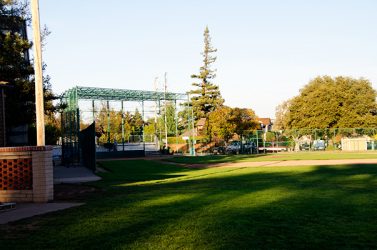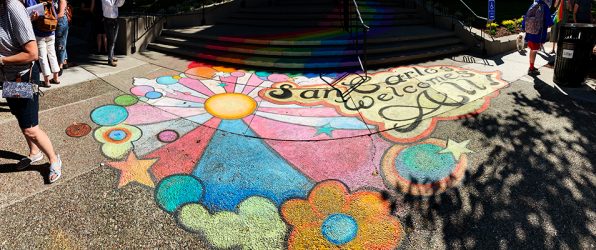There’s an item coming back to the Council on Monday which touches on my strong desire to see the City improve its relationship with the community it serves. Even though you probably wouldn’t think so based simply on the item’s title. That’s because it “only” involves replacing trees in Burton Park. Let me explain what I see as the bigger picture aspects to the decision, and what I would like to see included in the decision-making process.
Quite a few of the eucalyptus trees bordering Burton are in sad shape. That’s raised the risk that someone or something will get injured or damaged from falling branches, some of which are quite large. In fact, branch fall events have occurred recently, but we’ve been lucky that no harm was done (so far as I know).
This situation quite naturally led staff to hire an arborist to study the trees and make recommendations on addressing the problems and risks. The report, which you can view online here, recommended that most or all of the 23 trees be replaced, essentially because they pose a safety risk. Personally, I have no problem with replacing trees that are in that condition. I like trees (in fact, I spent quite a bit of time, effort and money dealing with a neighbor who sprayed herbicide into my backyard, killing a number of trees on my property), but they do age, or succumb to disease, and I definitely don’t want someone’s car or person to be hurt by a falling tree limb! It’s certainly possible that better maintenance would have resulted in a better situation, but the fact of the matter is that there does appear to be a safety problem. And yes, I understand that different arborists can come to different conclusions, but we do have a budget to worry about, and, as my marketing professor used to point out, “needs more study” isn’t always the best use of scarce time and resources.
Where I do have a concern is the way in which this process is unfolding. It is definitely within staff’s purview to act to maintain public health and safety. In fact, I’d be upset if they didn’t act proactively in that arena. But there are ways and ways of taking any action, and having the Council make the decision is not only odd, but not necessarily the best approach. We don’t vote on repairing potholes or broken water mains; we expect staff to do that on its own. Why is tree replacement coming before the Council?
The answer is interesting, and gets to the heart of why this item relates to bigger issues. Staff is confident that they know what should be done, but recognizes the public may be interested in such a significant action. Having the Council make the decision provides a public forum for concerned or interested citizens to make their views known.
That’s fine in theory. But most people don’t monitor Council agendas closely, and could well be genuinely surprised to see large and long-standing trees suddenly replaced by much smaller new ones. Surprise may be fun at birthday parties, but in the political arena it can damage relationships. That’s why most savvy public officials interact with the staffs they oversee under the “no surprises” rule: let interested parties know what you’re thinking of doing before you do it. Besides avoiding damage to relationships, this also creates opportunities to learn more about an issue. And who knows? When you learn more, you may decide to do something different.
In fairness to staff, the tree replacement proposal calls for holding community meetings after the Council makes its decision but before any work is done (assuming that the Council votes to replace the trees). That does address part of my concern. But holding community meetings after a decision is made about a significant change can strike people as disingenuous or pointless, fueling the perception that concerned or interested residents have no real say in the process. Ultimately, the only people with a definitive say in these matters are staff (acting to fulfill their public safety responsibility), the Council (if the matter comes before them), and any plaintiffs or judges that get involved because someone files suit against the City for what it decides to do. Nevertheless, giving people a chance to weigh in, for real, on an issue is important to maintaining a healthy relationship with the community. It’s the lack of that in the current approach which concerns me.
To be clear, like most other political matters, this isn’t black & white. Concerned or interested citizens do have an opportunity to speak their minds by addressing the Council before it votes. But that’s where I wonder if the City has done enough outreach, to let people know this matter is up for action. In an interesting coincidence, at Monday’s meeting we will also be considering taking the next step in banning Styrofoam food containers within the City. There’s been a significant amount of outreach done on that issue, far more than on replacing the trees at Burton Park. Granted, banning Styrofoam impacts businesses, and consumers, financially. But large-scale replacement of trees impacts community members, too, even if only aesthetically. Why not do more outreach on the tree replacement?
As a practical matter, I don’t want to commit the City to doing significant outreach efforts on every action staff or the Council takes. We do have resource constraints to consider! It’s a “where do you draw the line” question. Replacing a single diseased or dangerous tree? In my opinion, just do it (unless it plays some kind of significant role in community history or culture).
But replacing 23 large trees at what is probably the most prominent park in all of San Carlos? That would seem to justify a non-trivial amount of outreach. Hopefully next time something like this comes up, that’ll be included in the process.
